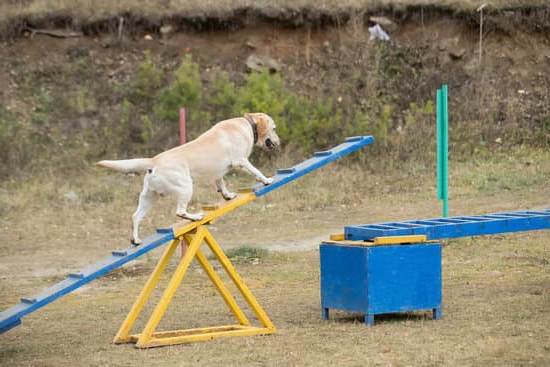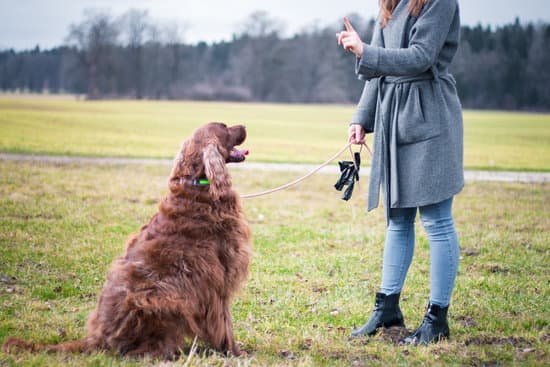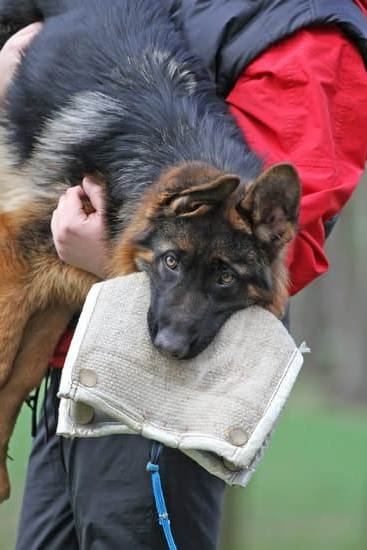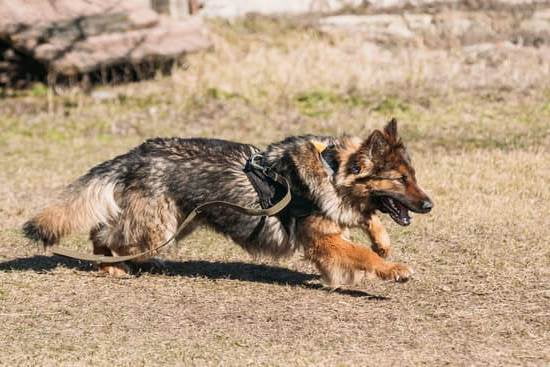Can you train shyness out of a dog? Understanding and addressing shyness in dogs is an important aspect of responsible pet ownership. Factors such as genetics, socialization, and past experiences can all contribute to a dog’s shyness.
It’s crucial for dog owners to be able to recognize the signs of a shy dog, including avoidance, hiding, and submissive posturing. Shyness can have a significant impact on a dog’s well-being, affecting their mental and emotional health as well as their overall quality of life.
Training techniques and positive reinforcement methods can play a vital role in helping shy dogs overcome their fears and build confidence. Additionally, proper socialization with people, other dogs, and new environments is essential for shy dogs to thrive. Building trust and establishing a strong bond with a shy dog can also alleviate anxiety and promote a sense of security. Seeking the help of a professional dog trainer or behaviorist may also be beneficial when dealing with a shy dog.
It’s important for dog owners to approach training with patience and consistency, understanding that progress may take time. Success stories of dogs who have overcome their shyness through training provide hope and inspiration for those facing similar challenges with their own pets. In this article, we will delve into the various aspects of understanding shyness in dogs and explore effective strategies for helping shy dogs lead fulfilling lives.
The Signs of a Shy Dog
When it comes to identifying a shy dog, understanding their behaviors and body language is crucial. Shy dogs often display avoidance when encountering unfamiliar people, animals, or environments. This could mean attempting to hide behind their owner, cowering, or even attempting to escape the situation altogether. In addition to avoidance, hiding is another common behavior exhibited by shy dogs. They may seek out hiding spots in an attempt to remove themselves from a scary or overwhelming situation.
Furthermore, submissive posturing is another telltale sign of shyness in dogs. This can include tucking their tail between their legs, flattening their ears against their head, and avoiding eye contact. These submissive behaviors are the dog’s way of communicating fear and discomfort with a particular situation or individual. Understanding these behaviors and body language cues is essential for dog owners in order to provide the necessary support and training for their shy dog.
In many cases, shy dogs may be misunderstood as unfriendly or untrainable due to their behaviors. However, with patience and positive reinforcement training techniques, shy dogs can overcome their fears and build confidence. By recognizing and understanding the signs of shyness in dogs, dog owners can take proactive steps to help their furry companions feel more secure and comfortable in various situations.
The Impact of Shyness on a Dog’s Well-Being
Shyness in dogs can have a significant impact on their overall well-being, including their mental and emotional health. It’s important for pet owners to understand the potential negative effects of shyness and how it can affect their dog’s quality of life.
Some of the potential negative effects of shyness in dogs include:
- Increased stress and anxiety levels
- Difficulty in forming relationships with humans and other animals
- Reduced enjoyment of social interactions and activities
Furthermore, shy dogs may also be more prone to developing behavioral issues such as aggression or destructive behavior as a result of their feelings of fear and insecurity. It’s crucial for dog owners to recognize these potential negative effects and take proactive steps to help their shy dog overcome these challenges.
One of the ways to address the impact of shyness on a dog’s well-being is through positive reinforcement training methods. By using positive reinforcement techniques, such as rewarding brave behavior and building confidence through training exercises, pet owners can help their shy dogs develop a greater sense of security and reduce feelings of fear and anxiety.
Training Techniques for Shy Dogs
Shyness in dogs is a common issue that can have a significant impact on their overall well-being. Fortunately, there are various training techniques that can help shy dogs overcome their fears and build confidence. Positive reinforcement methods have been found to be particularly effective in helping shy dogs become more comfortable and secure in different situations.
One effective technique for training shy dogs is desensitization, which involves gradually exposing the dog to the source of their fear in a controlled and positive way. For example, if a dog is afraid of meeting new people, the owner can start by having one person approach the dog calmly and offer treats as a reward for calm behavior.
Over time, more people can be introduced, always accompanied by positive reinforcement to help the dog associate these interactions with something pleasant.
Another helpful training method is counter-conditioning, which involves changing the dog’s emotional response to a particular stimulus. For instance, if a dog is scared of loud noises, such as thunder or fireworks, the owner can use treats or toys to create positive associations during exposure to those sounds. This can help the dog learn that loud noises are not something to fear.
Overall, it’s important for owners of shy dogs to be patient and consistent in their training efforts. Building confidence in a shy dog takes time and effort but with dedication and the right techniques, many shy dogs can learn to become more at ease in different situations.
Seeking the help of a professional dog trainer or behaviorist may also be beneficial for owners who are struggling to make progress with their shy dog despite their best efforts. With the right approach and support, shy dogs have shown great potential for improvement and have gone on to live happier, more confident lives.
Socialization Strategies
Training a shy dog to be more comfortable and confident in social situations can be a challenging but rewarding process. Proper socialization is essential for the overall well-being of a dog, especially for those who struggle with shyness. Here are some tips and advice on how to properly socialize a shy dog with people, other dogs, and new environments:
- Start slow: Introduce your shy dog to new people, dogs, or environments gradually and in a controlled manner. Avoid overwhelming them with too many new experiences all at once.
- Use positive reinforcement: Reward your shy dog with treats, praise, and affection when they show signs of confidence and comfort in social settings. This will help them associate social interactions with positive experiences.
- Exposure to different environments: Take your shy dog to different places such as parks, beaches, or pet-friendly stores. Exposing them to various environments can help build their confidence and reduce anxiety.
Properly socializing a shy dog requires patience and understanding. It’s important to provide a supportive environment for the dog as they navigate through new experiences. Consider consulting with a professional trainer or behaviorist who can offer guidance on effective socialization techniques tailored to your dog’s specific needs.
Remember that every dog is unique, so what works for one may not work for another. But with time, patience, and consistent effort, it is possible for shy dogs to become more confident and comfortable in various social situations.
As you work towards helping your shy dog overcome their fears and anxieties through proper socialization, celebrate small victories along the way. Each step forward is a significant achievement that brings you closer to having a happy, well-adjusted canine companion.
Building Trust and Bonding
Understanding a Shy Dog’s Needs
To effectively build trust and bonding with a shy dog, it is important to understand their specific needs and triggers. Some shy dogs may be sensitive to loud noises, new environments, or unfamiliar people, while others may require extra patience and reassurance. Taking the time to observe and understand your dog’s behavior can help you meet their needs more effectively.
Creating a Safe Environment
Establishing a safe and secure environment is key to building trust with a shy dog. This involves creating predictable routines, providing a quiet space for them to retreat to when feeling overwhelmed, and offering positive reinforcement through treats, toys, and gentle praise. By consistently meeting the dog’s basic needs for safety and security, owners can begin to form a bond based on trust.
Positive Reinforcement and Patience
Using positive reinforcement techniques such as treats, praise, and playtime can help shy dogs associate human interaction with positive experiences. It is important to be patient during this process as building trust takes time. Consistency in training methods and interactions will reinforce the sense of security that forms the foundation of the bond between owner and shy dog.
By establishing a strong bond based on trust and understanding, owners can help their shy dogs overcome anxieties, fears, and insecurities. This approach can have long-term benefits for the mental well-being of the dog while also strengthening the relationship between pet and owner.
Working With a Professional
Seeking the help of a professional dog trainer or behaviorist can be incredibly beneficial when dealing with a shy dog. These experts have the knowledge and experience to understand the root causes of a dog’s shyness and can provide customized training plans to address their specific needs. Professional trainers and behaviorists use scientifically-backed methods to help shy dogs build confidence and overcome their fears, leading to significant improvements in their overall well-being.
Expert Assessment and Personalized Approach
One of the key benefits of working with a professional is their ability to conduct a thorough assessment of your shy dog’s behavior. This allows them to identify the underlying triggers for your dog’s shyness and tailor a training program that is specifically designed to address those triggers. Additionally, professionals can offer personalized guidance on how to modify your behavior as a pet owner to better support your shy dog.
Access to Specialized Resources and Tools
Professional trainers and behaviorists have access to specialized resources, such as desensitization equipment, sound therapy tools, and controlled socialization environments, that can greatly aid in the training process for shy dogs. These tools are essential for creating safe and effective training environments that facilitate gradual exposure to stimuli that trigger shyness in dogs.
Support and Ongoing Guidance
Working with a professional provides ongoing support and guidance throughout the training process. They can offer valuable advice on how to handle setbacks, make adjustments to the training plan as needed, and ensure that you remain consistent in your efforts. This level of support is crucial for pet owners who may feel overwhelmed or uncertain when dealing with a shy dog.
Patience and Consistency
Training a shy dog requires patience and consistency. It is important to understand that progress may take time, and that each dog will have their own unique journey towards overcoming their shyness.
It is crucial for dog owners to approach training with an open mind and a willingness to put in the necessary time and effort. Consistency in training methods, as well as patience in allowing the dog to progress at their own pace, are key factors in helping a shy dog become more confident and comfortable in different situations.
One of the most important aspects of training a shy dog is creating a safe and supportive environment for them. This includes providing positive reinforcement, such as treats, praise, and affection, when they display brave or confident behaviors.
Consistency in rewarding these positive behaviors will help the dog understand what is expected of them and encourage them to continue making progress. It’s important for owners to remain patient and not get discouraged if their shy dog does not make immediate strides – every small step forward should be celebrated.
Additionally, maintaining a consistent routine can provide shy dogs with a sense of security and predictability, which can help reduce their anxiety. This can include regular feeding times, walks, play sessions, and training exercises. By establishing a predictable routine, owners can help build trust with their shy dog and provide them with the stability they need to feel more at ease.
| Training Techniques | Benefits |
|---|---|
| Positive reinforcement | Encourages desired behaviors |
| Consistent routine | Provides stability and security |
| Safe environment | Promotes confidence building |
Success Stories
In conclusion, while shyness in dogs can present unique challenges, it is important for dog owners to understand that with the right training and dedication, it is possible for a shy dog to overcome their fears and build confidence. By utilizing positive reinforcement techniques, proper socialization strategies, and working with a professional if necessary, dog owners can help their shy pets lead healthier and happier lives.
Success stories of dogs overcoming their shyness through training are not only inspirational but also provide hope for dog owners facing similar challenges. These real-life examples serve as a reminder that with patience, consistency, and unwavering support, shy dogs can learn to trust and feel more secure in various environments. It is essential for dog owners to remember that progress may take time but with dedication and persistence, positive changes are achievable.
Ultimately, the journey of helping a shy dog become more confident and comfortable in the world is a rewarding one. The bond that develops between a dog and their owner during this process is invaluable. By celebrating the small victories along the way and staying committed to their pet’s well-being, dog owners can make a significant difference in the life of a shy dog-and experience the joy of witnessing their beloved pet thrive.
Frequently Asked Questions
How Do You Break a Shy Dog?
Breaking a shy dog out of their shell requires patience, consistency, and positive reinforcement. It’s important to create a safe and comforting environment for the dog, slowly introducing them to new people, places, and experiences. Building their confidence through obedience training and socialization can also help them overcome their shyness.
Can You Train Nervousness Out of a Dog?
While you may not be able to completely train nervousness out of a dog, you can certainly help them manage and cope with their anxiety. Training techniques such as desensitization, counter conditioning, and confidence-building exercises can all be effective in helping a nervous dog become more comfortable in various situations.
It’s important to work with a professional trainer or behaviorist to develop a tailored plan for the specific needs of the dog.
Can a Shy Dog Be Cured?
Curing a shy dog is possible with the right approach and dedication. By gradually exposing the dog to new experiences and providing positive reinforcement, their confidence can improve over time.
However, it’s essential to understand that some dogs may always have a tendency towards shyness or fearfulness, so the goal should be more about managing these tendencies rather than expecting complete cure. With patience and understanding, even shy dogs can live happy and fulfilling lives.

Welcome to the blog! I am a professional dog trainer and have been working with dogs for many years. In this blog, I will be discussing various topics related to dog training, including tips, tricks, and advice. I hope you find this information helpful and informative. Thanks for reading!





